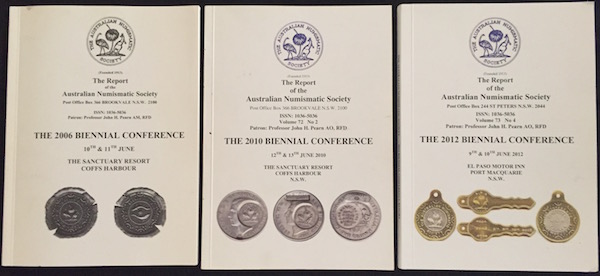The Alignment of the Holey Dollar Dies - Part II

Following the publication of our first article on the alignment of the dies used to strike the Holey Dollars, I got a phone call from George Snelgrove - currently a councillor with the Queensland branch of the Australian Numismatic Society (ANS). George mentioned that although he didn't get our email himself, he'd been told about it by John Cook - the Secretary of the Queensland branch of the ANS.
What followed was quite an animated conversation about a number of aspects of the article, and the Holey Dollar and Dump generally. George stated that this was the first information he'd seen on the alignment of the Holey Dollar dies, outside the articles that he'd written for the ANS Journals. This grabbed my attention immediately, because I hadn't come across those articles myself.
Dies on the Vast Majority of Holey Dollars are Aligned, However Not With the Host Coin
George mentioned that his analysis showed that the dies of the Holey Dollars were mainly aligned, although the dies were definitely not always aligned with the host coin.
Our conversation ranged across the working conditions that Henshall worked under, the apparent lack of ongoing study that is done on these historic coins, and the likelihood of the dies being aligned intentionally.
We agreed that I'd get back to him after I'd read his articles - fortunately I keep anything that is printed on any area of Australian numismatics, so was able to locate them in my library fairly quickly.
Although George and I have so far gone down slightly different paths with our research into the Holey Dollar dies, the fact that two people had written about it on completely different sides of the country at least shows that it is a subject that is going to be of interest to other collectors.

Did Henshall Work by Himself?
Importantly, George stated (with some compelling logic I might say) that Macquarie's estimated time-frame for the production of these coins was "wildly inaccurate", and further that he did not see how Henshall could have worked by himself, and maintained the output that he did.
Were Dumps With a Diameter of 20mm Struck First?
The article that George wrote in "The Report of the ANS for the 2010 Biennial Conference" was titled "Holey Dollars and Dumps - Some Further Comment", explored the ratio of sizes between the Holey Dollar and the Dump, more to the point he touched on what this ratio of sizes, and the different sizes means for our understanding of the way in which these coins were produced. The relationship between planchet thickness and diameter was another area George touched on - he suggests that Dumps with a diameter of 20mm could well have been struck very early in Henshall's production run.
The article that George wrote in "The Report of the ANS for the 2012 Biennial Conference" was titled "Dies of the Holey Dollars and Dumps of New South Wales" and discussed how the dies used to strike all of the known genuine Holey Dollars and Dumps were produced using one set of punches - this is an incredibly important fact when it comes to authentication, and also has implications for our understanding of the way these coins were produced.
The upshot of these conversations with George, and this new reading material is that we now have a real sounding board to add to the body of knowledge about how these coins were struck. Two heads are certainly better than one when it comes to numismatic research - theories can be tested and more resources can be thrown at difficult questions. I also have a lot more questions! This shows that the New South Wales Holey Dollar and Dump remain a rich area for numismatists to explore in the coming years - even though they were struck more than 200 years ago. I'll be posting more research as it gets completed - if you'd like to pitch in on any aspect of this, or have any corrections or suggestions, please get in touch.